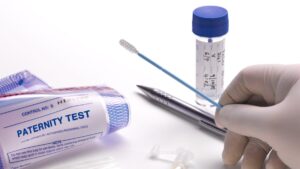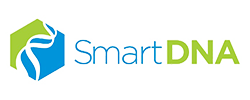Determining biological paternity is a crucial aspect in many situations, such as resolving legal disputes, tracing ancestry, or simply gaining peace of mind. Paternity testing is the most reliable scientific method to establish this relationship, and it all begins with a crucial first step – DNA sample collection. The two most common methods for this process are blood samples and buccal (cheek) swabs. But which one is better for paternity testing? Let’s explore the advantages and disadvantages of both.
Blood Sample
A blood sample for DNA testing involves collecting blood from a vein, usually in the arm. This sample is then sent to a lab for DNA extraction and analysis.
Advantages:
- Abundant DNA: Blood samples generally yield a large amount of DNA, which can be useful for comprehensive genetic testing.
- High-Quality DNA: DNA from blood samples is typically high quality, with less chance of degradation.
Disadvantages:
- Invasive Procedure: The process involves a needle to draw blood, which can be painful and distressing, particularly for children.
- Professional Assistance Required: Collecting a blood sample needs to be done by a healthcare professional, which could mean a trip to a clinic or hospital.
Buccal Swab
A buccal swab involves rubbing a cotton swab against the inside of a person’s cheek to collect skin cells, which also contain DNA. This procedure is simple and non-invasive.
Advantages:
- Non-Invasive: This method is painless, making it more comfortable and especially suitable for children.
- Easy and Convenient: Buccal swabs can be self-administered at home, without the need for a healthcare professional. They are easy to use, and samples can be taken at any time.
- High-Quality DNA: The DNA obtained from buccal swabs is of high quality, which is vital for precise results.
Disadvantages:
- Risk of Contamination: There’s a risk of contamination if the swab touches other surfaces, or if the individual has recently consumed food or drink. Careful following of instructions can minimize this risk.
Blood Sample vs Buccal Swab: Which is Better for Paternity Testing?

The choice between a blood sample and a buccal swab for paternity testing largely depends on the specific situation and the individual’s comfort.
For paternity testing, the quantity of DNA obtained through both methods is usually sufficient for accurate analysis. Modern DNA testing methods are incredibly sensitive and can work with the DNA obtained from buccal swabs just as effectively as with DNA obtained from blood samples.
Buccal swabs are often preferred for their convenience and non-invasive nature. They’re particularly useful for at-home paternity tests, where the kits can be sent directly to the customer, the samples collected conveniently at home, and then returned to the lab.
While blood samples can also be used for paternity testing, the invasive nature of the method, coupled with the need for a healthcare professional, makes it less popular for this specific test.
Conclusion
In conclusion, while both blood samples and buccal swabs can be used effectively for paternity testing, buccal swabs are generally the preferred method due to their simplicity, non-invasive nature, and convenience.
At Smart DNA, we understand the importance of accurate and reliable paternity testing. Our home testing kits use buccal swabs for DNA collection, offering an easy and stress-free way to collect DNA samples in the comfort of your home. Regardless of the method used, you can trust us to deliver confidential, accurate, and fast results.

